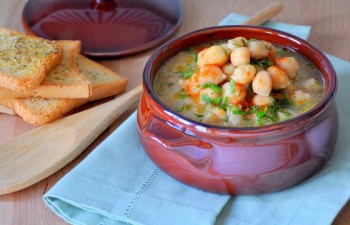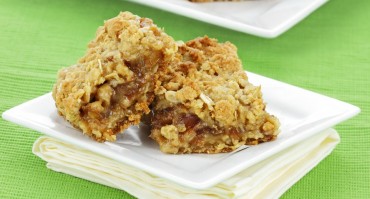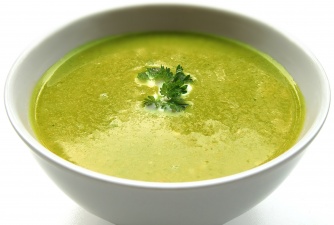
Last week with our recipe for the Syrian dip muhamarra, we embarked on a perilous culinary adventure: trying to recreate authentic versions of classic Middle Eastern dishes.
Why perilous? Well, my grandmother and grandfather couldn’t, between the two of them, agree on the best way to make charoset. Trying to come up with a recipe everyone can get behind? Totally hopeless.
But, as we said then, everybody needs to start somewhere, and it’s far better to get in the cooking game than to watch from the sidelines. Trying, as our grade two teacher told told us, is half the battle.
And with that, we plunge fearlessly into the wonderful world of… baba ganoush!
Baba Ganoush
- 3 small eggplants*
- 2 tbsp t’hina
- 2 tablespoons lemon juice
- 2 cloves garlic, minced
- 2 tablespoons olive oil
- salt and pepper to taste
- some flat-leaf parsley (optional)

- Preheat the oven to 200°C. Prick each eggplant a few times with the tines of a fork.
- If you have a gas stove, turn on one of the burners and char the eggplants all over, turning them often as they blacken. (Skip this step if you have an electric stove, or do this on a grill if you have one and weather permits.)
- Place the eggplants on a foil-lined baking sheet and roast until they are extremely soft and have collapsed in on themselves, about 30-40 minutes. Remove from the oven and carefully cut a slit down the centre of each to allow the steam to escape. Leave the eggplants to cool to room temperature.
- Scrape out and discard as many of the seeds from the eggplants as you can, then scrape the pulp into the bowl of a food processor. Add remaining ingredients, and process until you reach your desired consistency: some people prefer smooth, others like to leave it a little chunky.
- Taste and adjust the seasonings. Chill for a few hours, and preferably overnight, before serving.
* We’ve called for small eggplant because these tend to be less bitter, however you can easily substitute two medium/large eggplant if that’s what’s available.

More green food:
A Classic Muhamarra Recipe from Aleppo, Syria
Michael Pollan, In Defense of Food
Vegawarian Dinner
Tomato Confit Recipe




You must char the skin. Don’t bother making this dish if you can’t char the skin. Make sure bits of the charred skin is in the dish.
I don’t use herbs, but I use a lot more lemon and garlic than you do.
For a special touch, sprinkle with pommegranate seeds. The tart juice tastes amazing with it.
I wouldn’t use a food processr either.
This dish is called Baba Ghanoush (‘Fainting father) because it was so good, the father fainted from joy at eating it.
I think adding cilantro instead parsley should be good too… I don’t add any herbs when I make mine. If you are interested, here’s my version of Baba Ganoush http://desigrub.com/2010/08/my-interpretation-of-baba-ganoush/ . I will like to hear your feedback on my recipe if you have time…
That's what I do too. I never use a food processor.
That's what I do too. I never use a food processor.
Baba is great, but you don't need a food processor. I just put the eggplants on a big cutting board and chop them up, then throw in all the other ingredients. The eggplant is so mushy by the time it gets out of the oven that all you need is a few passes with a knife.
Baladi eggplants in babaganoush (baba ganush or whatever you want to call it!) works best for me. Baladi means “wild” in Arabic; they are wrinkled and wider more than they are long.
Baba Ganoush, sounds good and also i think this will be tasty recipe. Really wanna try it!